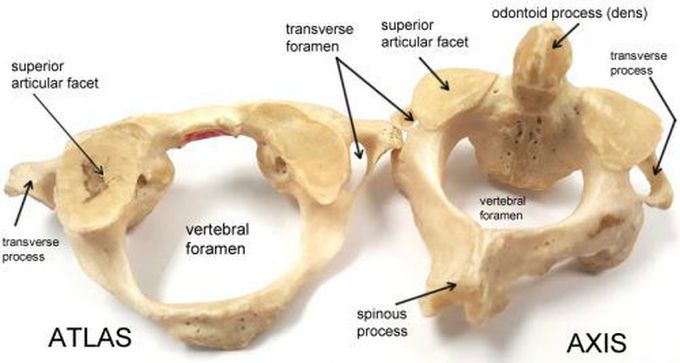


Difference between atlas and axis
Different between atlas and axis bone 1.dens 2.spinous process The axis vertebra is the bone which joins the spine and skull. It works in tandem with the atlas bone. Together they allow a wide range of motion for humans compared to that of animals. Some of the movements that the bones provide for the head include nodding and rotation movements of the head. While the atlas mainly holds the head upright, the axis is responsible for extending the motion of the human head. The axis is also an important bone as it contains and encases the entire brain stem, making it crucial for the human system’s survival and functionality. The axial vertebrae or the axis bones are also collectively called the vertebral column (or spine) in the human skeleton. The human spine is comprised of the spinal column which is essential in transporting various nerve signals from the brain to the different parts of the body. Moreover, the axial skeleton also supports the back muscles and provides more movement to the upper body. While the axial vertebrae might have a spinal column, the atlas bone does not contain any spinous process and has no articular disks attached to it. The atlas bone is found between the cranium and the axis vertebrae.

